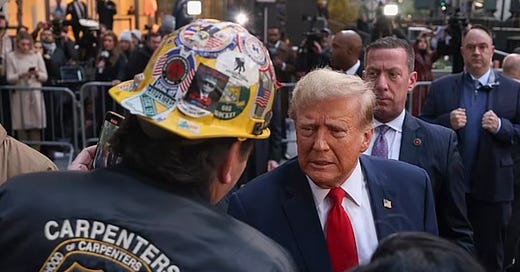Not all that it seems
The US economy seems to have made a bounce back since Trumps tariffs on 'Liberation day', but Americans will be feeling the pinch and might just be worse off.
Since Trump introduced new tariffs on 4th April, US consumers have paid a total of $24.2 billion. This, of course, is due to the tariff increases being passed on from the importer to the consumer. But with the US economy appearing to bounce back, will Americans actually feel the benefit?
In short: No. And there’s a phenomenon that describes this exact scenario — the vibecession. That’s when the economy is doing well, statistically speaking, but people aren’t feeling it.
It’s important to understand that investment in an economy is often driven by perceived confidence — not necessarily a reflection of widespread financial wellbeing. Sure, that investment might eventually translate into better outcomes for some, but it takes time. And it’s not felt equally.
Ownership Is Everything
There’s one key difference that determines how people feel economic growth: ownership.
If you own assets — like a home or an index fund — then you’re more likely to benefit from economic expansion. But even asset owners aren’t immune to rising prices and reduced spending power.
In June alone, 147,000 jobs were added in the US. That sounds like a positive headline. But we need to consider whythose jobs were created.
Some Americans may have switched roles in pursuit of higher wages. Others may have taken on second jobs just to make ends meet. It’s entirely possible that retirees are returning to work — not by choice, but by necessity — to cope with rising costs driven by tariffs.
The Hill reported that Trump’s tariffs would cost US employers $82.3 billion. It’s fair to assume those costs are passed on to both consumers and workers.
Why Do Tariffs Raise Prices?
Tariffs aren’t paid by the country they’re aimed at. Instead, they’re paid by the importer — who, aiming to turn a profit, simply passes the cost on to consumers.
So why use tariffs at all?
Historically, tariffs were used during early economic development to protect emerging domestic industries from foreign competition. The idea was to give local businesses a fighting chance, encouraging consumers to buy cheaper, home-grown alternatives.
But that logic doesn’t quite hold up in today’s America.
Will Trump’s Tariffs Work?
Probably not. The US is the most advanced economy in the world. There’s little need to shield domestic industries from global competitors. In the meantime, prices on existing goods will climb — while home-grown replacements could take decades to reach scale.
So, Is the Economy Doing Well?
Yes — but many Americans aren’t.
Economic indicators may be up, but purchasing power is down. People are feeling the pinch. So, while the top-line figures show growth, we have to ask: growth for whom?
Broad statistics like GDP and job creation only tell part of the story. Behind those numbers, millions may be struggling — and that’s the real vibe of this economy.



